Cilantro, also known as coriander (Coriandrum sativum), is a fast-growing, fragrant herb that is essential in many cuisines around the world—from Indian curries and Mexican salsas to Mediterranean salads and Thai soups. The best part? You don’t need a large backyard to enjoy a constant supply of fresh cilantro. With the right approach, you can grow it successfully even in the smallest spaces, such as balconies, window sills, terraces, or kitchen corners.
This guide will take you step-by-step through the process of growing cilantro in small spaces, covering everything from choosing containers and soil to care, harvesting, and troubleshooting common issues. Whether you’re a beginner or an urban gardener, this guide will help you enjoy a thriving cilantro crop year-round.
Why Grow Cilantro in Small Spaces?
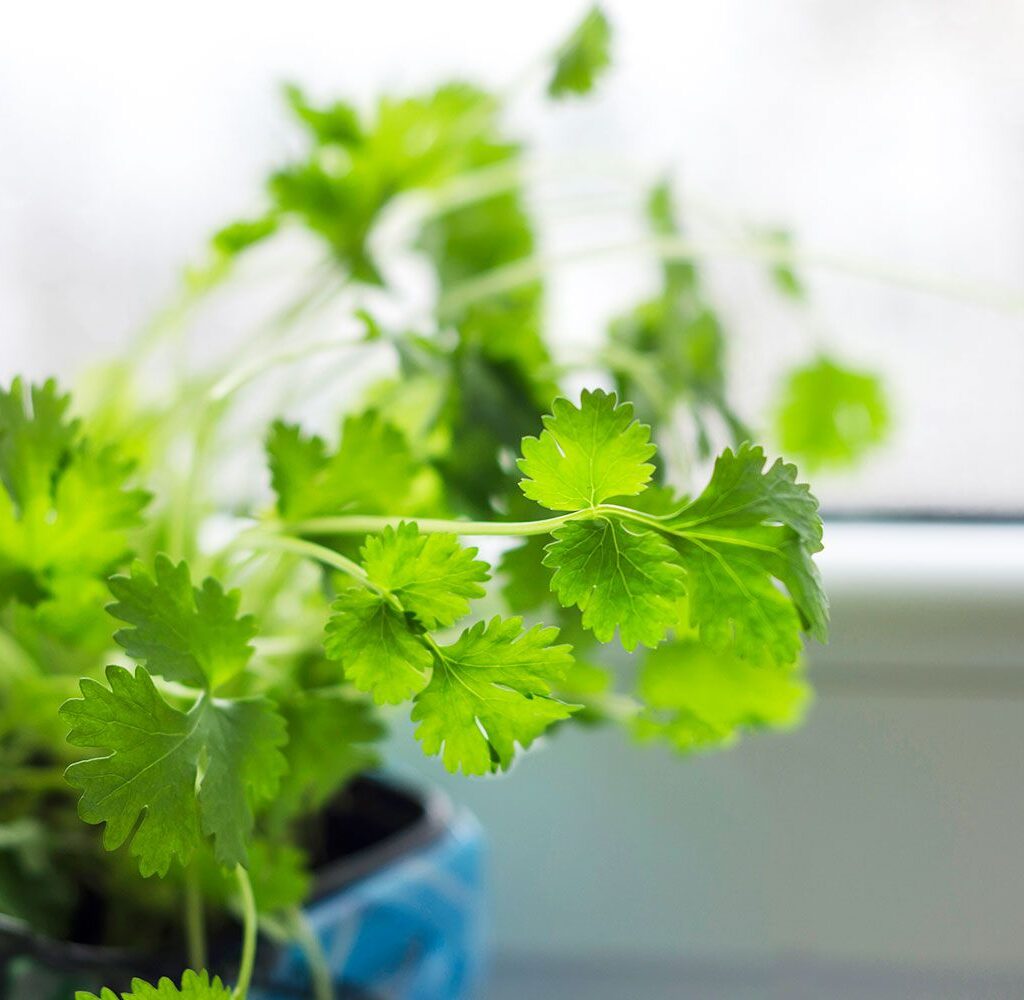
Cilantro is perfect for compact gardening setups due to its:
- Quick growth cycle: Harvest-ready in 3–4 weeks
- Shallow root system: Grows well in small pots or containers
- Dual-purpose use: Leaves (cilantro) and seeds (coriander) both edible
- Fresh flavor: Superior to store-bought herbs
- Low maintenance: Requires minimal space and care
Step 1: Choosing the Right Container
Cilantro does not require deep containers, but it needs enough space for horizontal spread and good drainage.
Ideal Container Specs:
- Size: Minimum 8–12 inches deep and wide
- Type: Plastic, terracotta, ceramic, or even recycled containers
- Drainage: Must have holes at the bottom to prevent waterlogging
You can use rectangular window boxes, vertical garden setups, or even hanging pots if you’re working with extremely limited space.
Step 2: Selecting the Right Variety
Cilantro comes in several cultivars, and your choice depends on whether you want it primarily for leaf production or seeds.
- Santo or Slow Bolt: Best for warm climates; resists early flowering
- Calypso: High-yielding and slower to bolt
- Leisure: Common kitchen garden variety
- Indian/Desi varieties: Great for seed (coriander) production
For small spaces, slow-bolting leaf varieties are ideal as they give you more harvesting time before going to seed.
Step 3: Soil Preparation

Cilantro thrives in loose, well-draining soil that is rich in organic matter. Compact soil leads to poor root growth and low yields.
Ideal Soil Mix:
- 1 part garden soil
- 1 part compost or well-rotted cow dung
- 1 part river sand or cocopeat (for aeration and drainage)
Maintain soil pH between 6.2 and 6.8, and ensure that the potting mix is moist but not soggy.
Step 4: Sowing Cilantro Seeds
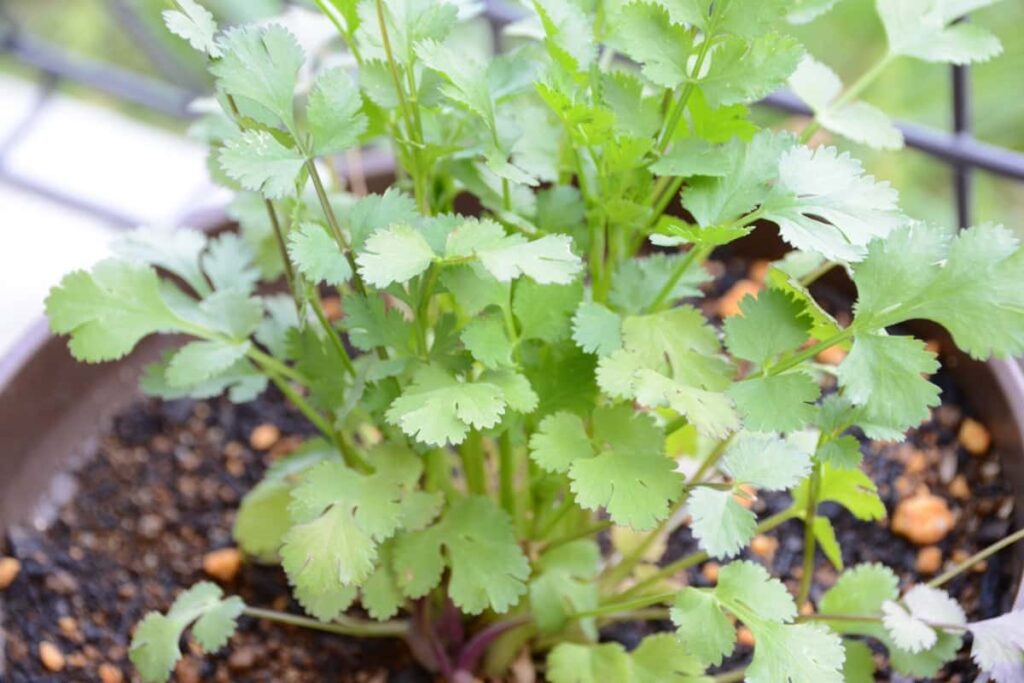
Prepping the Seeds:
Cilantro seeds are actually two seeds in one husk. To boost germination:
- Lightly crush the seed husk with your fingers or a rolling pin
- Soak in water for 8–12 hours before sowing
Sowing Instructions:
- Sow seeds ½ inch deep and cover lightly with soil
- Space seeds about 1 inch apart
- Mist the surface lightly after sowing
- Place the pot in a warm, sunny spot
Seeds germinate in 7–10 days depending on the temperature.
Step 5: Light, Watering & Temperature Requirements

Light:
- Needs 4–6 hours of sunlight daily
- Partial shade is acceptable in hot climates
- South- or east-facing balconies or windows are ideal
Watering:
- Keep soil consistently moist but avoid overwatering
- Water when the top 1 inch of soil feels dry
- Use a spray bottle or gentle watering can
Temperature:
- Grows best in cool to moderate temperatures (15–25°C)
- In hot summers, cilantro bolts (flowers) quickly—provide shade netting or afternoon shade
Step 6: Fertilizing
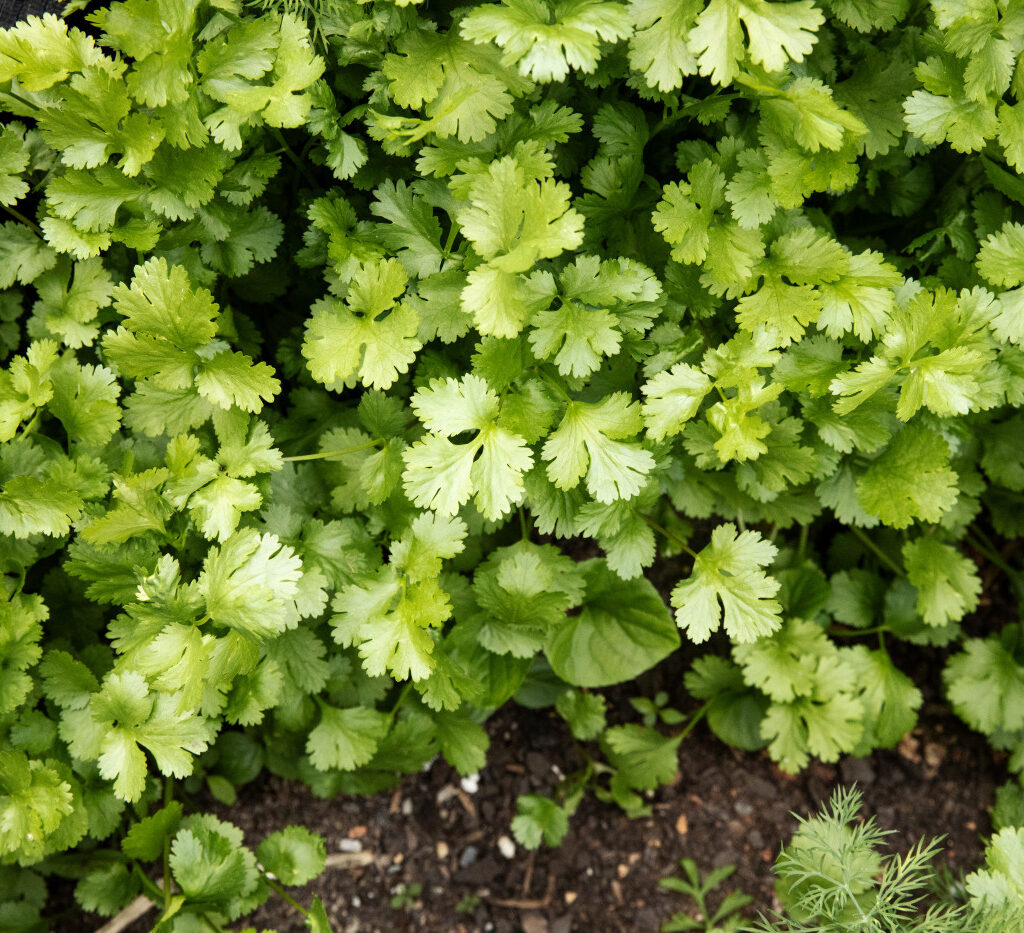
Cilantro doesn’t require heavy feeding, but light supplementation helps with lush foliage.
Fertilizer Tips:
- Use organic compost or vermicompost once every 2–3 weeks
- Liquid seaweed or fish emulsion every 15 days for a nitrogen boost
- Avoid high-nitrogen chemical fertilizers as they can alter flavor
Step 7: Thinning and Spacing
After the seedlings are 2–3 inches tall, thin them to promote airflow and stronger growth.
- Maintain spacing of 3–4 inches between plants
- You can use the thinned seedlings as microgreens in salads
Proper spacing prevents overcrowding and disease while encouraging better leaf production.
Step 8: Harvesting Cilantro
Cilantro grows quickly, and you can start harvesting leaves within 3–4 weeks of sowing.
Harvesting Tips:
- Use clean scissors to snip outer leaves 1 inch above soil level
- Always leave the inner growth intact to allow regrowth
- Harvest once or twice a week to encourage bushier growth
- Don’t let plants flower early if you want more leaves—remove flower buds if they appear
If you allow the plant to flower and set seed, you can collect coriander seeds once the flowers dry and turn brown.
How to Grow Cilantro Continuously in Small Spaces
Cilantro has a short life cycle (45–70 days). To keep a continuous harvest:
- Succession planting: Sow a new batch every 2–3 weeks
- Use multiple small pots or trays in rotation
- Choose slow-bolting varieties in warm climates
This method gives you a steady supply without long gaps.
Vertical Gardening with Cilantro
If you’re extremely tight on space:
- Use vertical planters or multi-tiered stands
- Repurpose old plastic bottles, hanging baskets, or wall-mounted containers
- Ensure proper drainage and sunlight access for each layer
Vertical gardening maximizes growing area and adds a beautiful green accent to small balconies or patios.
Common Problems and Solutions
| Problem | Cause | Solution |
|---|---|---|
| Yellow Leaves | Overwatering or poor soil drainage | Improve drainage; reduce watering |
| Bolting (early flowering) | High temperatures or water stress | Plant in cooler weather; keep soil moist |
| Leggy Plants | Lack of sunlight | Move to sunnier spot |
| Pests (aphids, whiteflies) | Humid conditions, crowding | Neem oil spray weekly; space plants better |
| Fungal diseases | Poor airflow | Prune extra leaves and ensure spacing |
Health & Culinary Benefits of Cilantro
Growing cilantro at home ensures chemical-free, fresh herbs loaded with:
- Vitamins A, C, K
- Antioxidants and essential oils
- Anti-inflammatory and digestive properties
Use fresh cilantro in:
- Salads, chutneys, and soups
- Garnishes for rice, curries, and tacos
- Blended into smoothies or dips like guacamole
Even the roots can be used in Thai cuisine for soups and sauces!
Conclusion
Growing cilantro in small spaces is not only possible but easy and incredibly rewarding. Whether you have a balcony, windowsill, or even just a kitchen counter with light, you can enjoy a continuous supply of this flavorful herb throughout the year. By following the steps in this guide—choosing the right pot, soil, variety, and care—you’ll turn even the smallest area into a mini herb garden bursting with freshness.
With a little planning and consistency, cilantro can become a staple of your home garden and your kitchen. Happy planting!
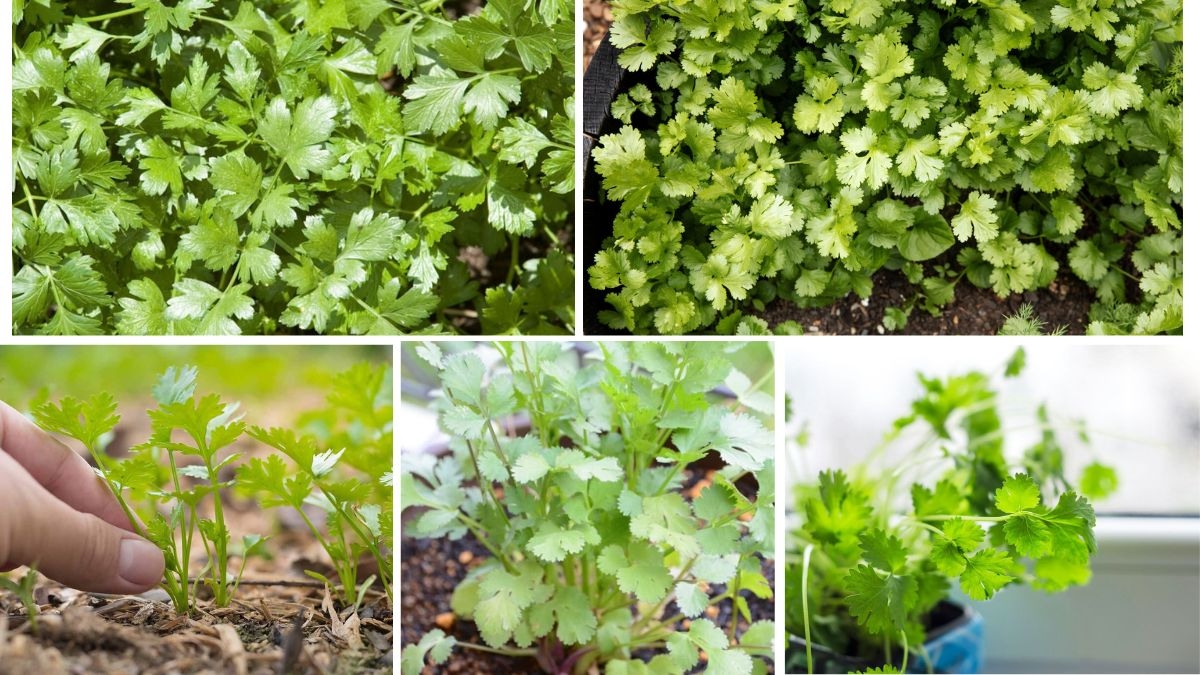




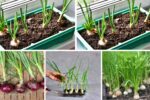
Leave A Comment